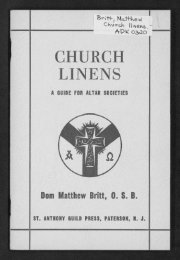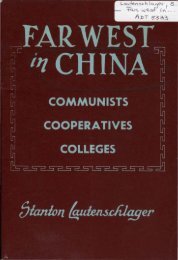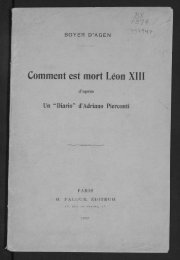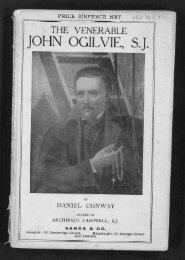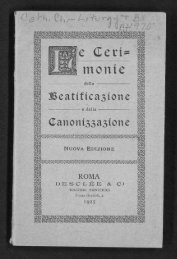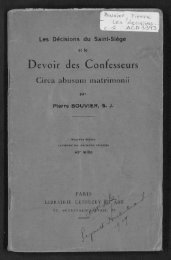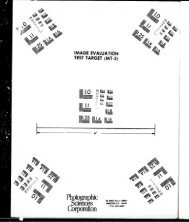r The Catholic Democracy of America,64 - Digital Repository Services
r The Catholic Democracy of America,64 - Digital Repository Services
r The Catholic Democracy of America,64 - Digital Repository Services
You also want an ePaper? Increase the reach of your titles
YUMPU automatically turns print PDFs into web optimized ePapers that Google loves.
<strong>The</strong> <strong>Catholic</strong> <strong>Democracy</strong> <strong>of</strong> <strong>America</strong>, 67<br />
my Maryland!" was the rallying cry <strong>of</strong> the South, and<br />
though <strong>Catholic</strong> and Protestant on either side <strong>of</strong> Mason and<br />
Dixon's line forgot all the distinction <strong>of</strong> creed fighting for<br />
the North or for the South, the integrity <strong>of</strong> the Church was<br />
never harmed, and, the year after the peace, Archbishop<br />
Spalding presided over the Second Plenary Council <strong>of</strong> Baltimore,<br />
which was said to have been the largest synodical gathering<br />
since the Council <strong>of</strong> Trent.<br />
<strong>The</strong> history <strong>of</strong> <strong>Catholic</strong>ism in the United States during the<br />
last two generations is most effectively expressed in figures.<br />
In 1830 there were nearly half a million <strong>Catholic</strong>s in a population<br />
<strong>of</strong> thirteen millions. By 1840 their numbers had<br />
doubled, while the population had increased only to seventeen<br />
millions, the proportion <strong>of</strong> Roman <strong>Catholic</strong>s to the entire population<br />
having risen from A to TV- Before the next decade<br />
closed the Irish famine had occurred, which was the chief<br />
X cause <strong>of</strong> the enormous accession <strong>of</strong> two millions <strong>of</strong> Roman<br />
<strong>Catholic</strong> inhabitants, and the three million <strong>America</strong>n adherents<br />
<strong>of</strong> the Church in 1850 constituted one-eighth <strong>of</strong> the<br />
total population. During those ten years the immigration to<br />
the United States was composed annually <strong>of</strong> about 200,000<br />
Irish and about 80,000 Germans; but in the next decade a<br />
change took place, and accordingly in 1854 we find that 220,-<br />
000 Germans landed in <strong>America</strong> and only 101,000 Irish.<br />
<strong>The</strong> proportion <strong>of</strong> <strong>Catholic</strong>s among the Irish immigrants is<br />
seven-eighths; their proportion among the Germans depends on<br />
the provinces from which in a given year the immigrants<br />
come, and varies from one-fifth to one-half <strong>of</strong> the total number.<br />
<strong>The</strong> <strong>Catholic</strong> population never lost ground, and now, in<br />
1890, the lowest estimate <strong>of</strong> its numbers is 9,000,000, the<br />
highest estimate 12,000,000, in a total population <strong>of</strong> nearly<br />
65,000,000. <strong>The</strong> next census <strong>of</strong> the United States will<br />
determine all conjectures, but meanwhile it is safe to consider<br />
that the Roman <strong>Catholic</strong>s number one-sixth <strong>of</strong> the inhabitants<br />
<strong>of</strong> the republic.



